I eat a lot of rice. I started with a cheap rice cooker many years ago, but one day, it suddenly stopped heating up, and I resolved to just make rice in a pot over the stove. That worked okay, but there was one big thing that bothered me: inconsistency. Every time I moved (a regular occurrence over the past few years), I'd have to figure out the right heat and time of a new stovetop for rice, and even then, it changed depending on what pot I used, how much rice I was making, etc. It worked out fine about 95% of the time, but every so often, I made a batch of rice that was just not good.
Eventually I decided I wanted a quality dedicated rice cooker — something that would be set and forget and work the same every time. As a bonus, it would also free up a burner, which I found myself running out of if I wanted to make meals with a lot of moving parts.
So, like with basically any purchase I make, I did research. One brand quickly stood out: Zojirushi. These seem to be the rice cookers, and I'm sure they're good, but right as I was about to go for one, I came across a brand I had not heard of before: Tatung.
Where many Zojirushi rice cookers have a whole array of buttons, the Tatung has two: on/off and cook/warm. I believe this design inspired the modern very cheap and ubiquitous rice cookers, but I couldn't find any clear source for that. Zojirushi seemingly makes dozens of different models in various sizes and with various functions while Tatung makes two: a 6-cup and an 11-cup model in a few different colors. In the end, I went with Tatung.
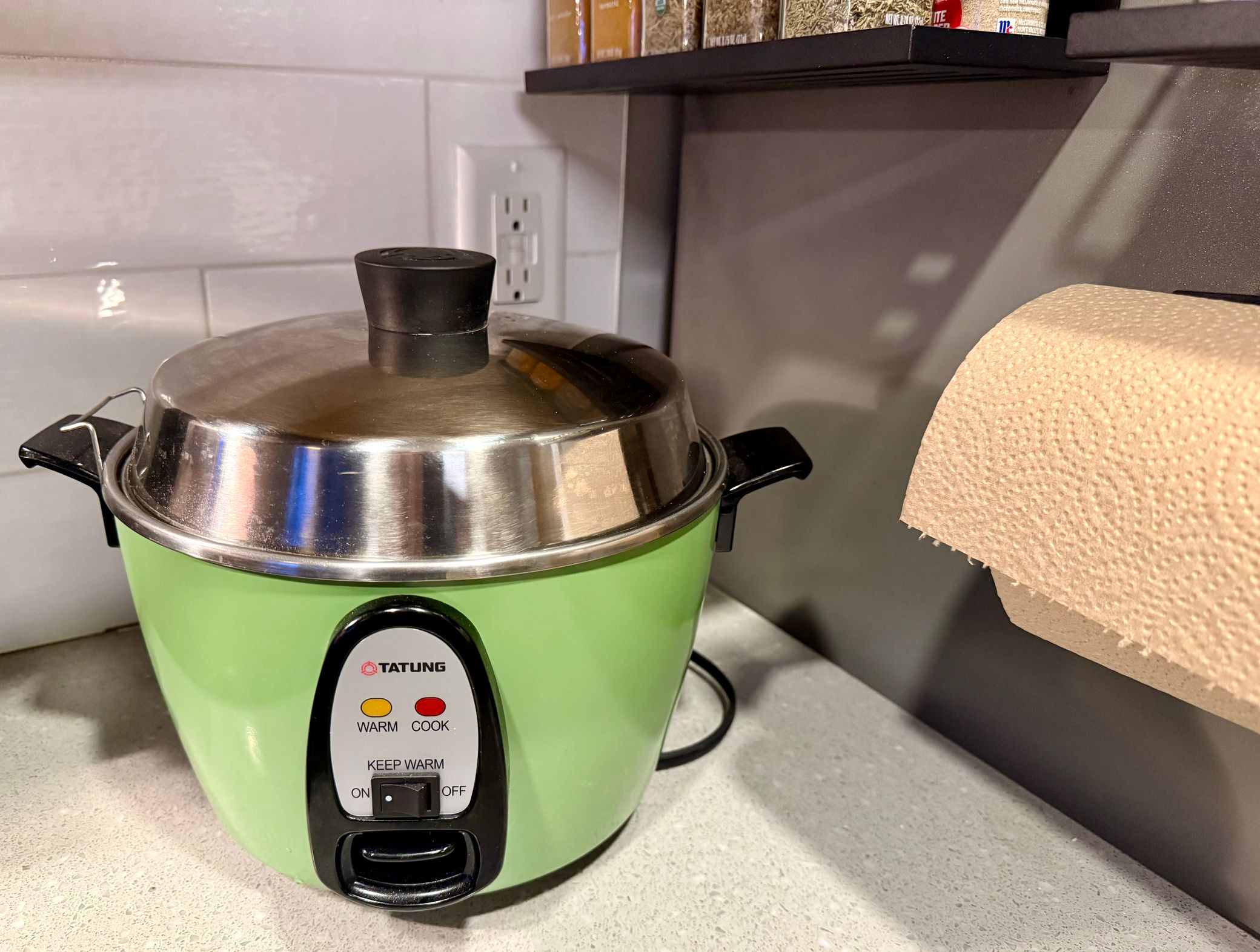
Tatung's history is interwoven with Taiwan. The brand is actually pronounced more like "Da-tong" depending on the accent of the speaker — the different spelling comes from the older Wade-Giles romanization of Chinese that's fallen out of favor in China but still gets used in Taiwan. It's not a well-known brand in the US, but these rice cookers are a fixture in many households in Taiwan. They are such an iconic piece of kitchen gear that you can find little toy versions of them in vending machines.
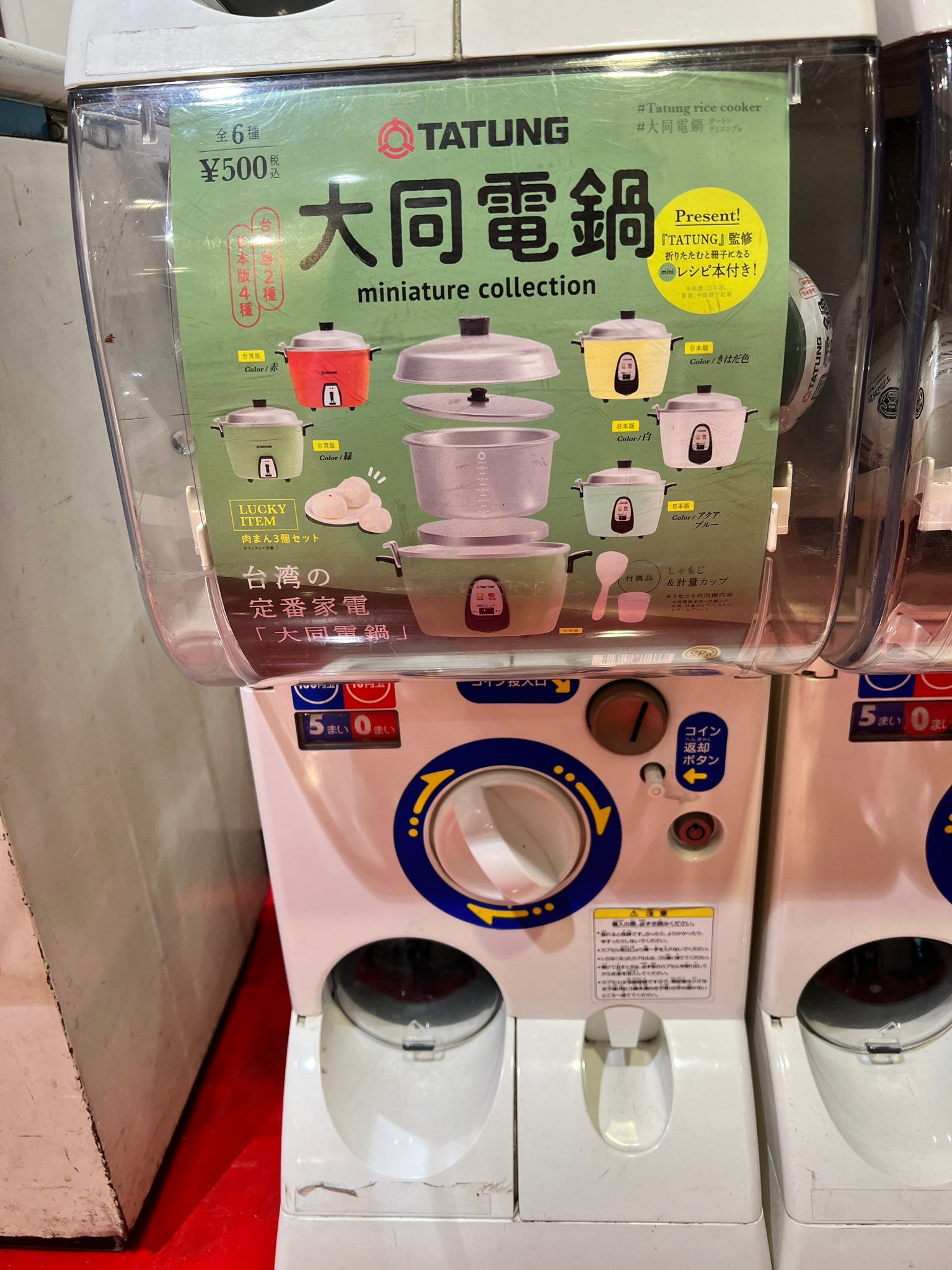
So, why the Tatung? Well, I wish I could say it's a hidden gem that is a million times better than any other rice cooker, but honestly there are tons of ways to make passable rice. It does make great rice, but so do other rice cookers, and even pressure cookers.
Functionally, there are two main benefits of the Tatung. The first is the unique cooking mechanism. It works like a double boiler, so the heat is applied gently and evenly which helps get soft, consistent rice through the whole pot. This isn't something I think about that much while using it, but I do think there is a small but noticeable benefit to the consistency of the texture.
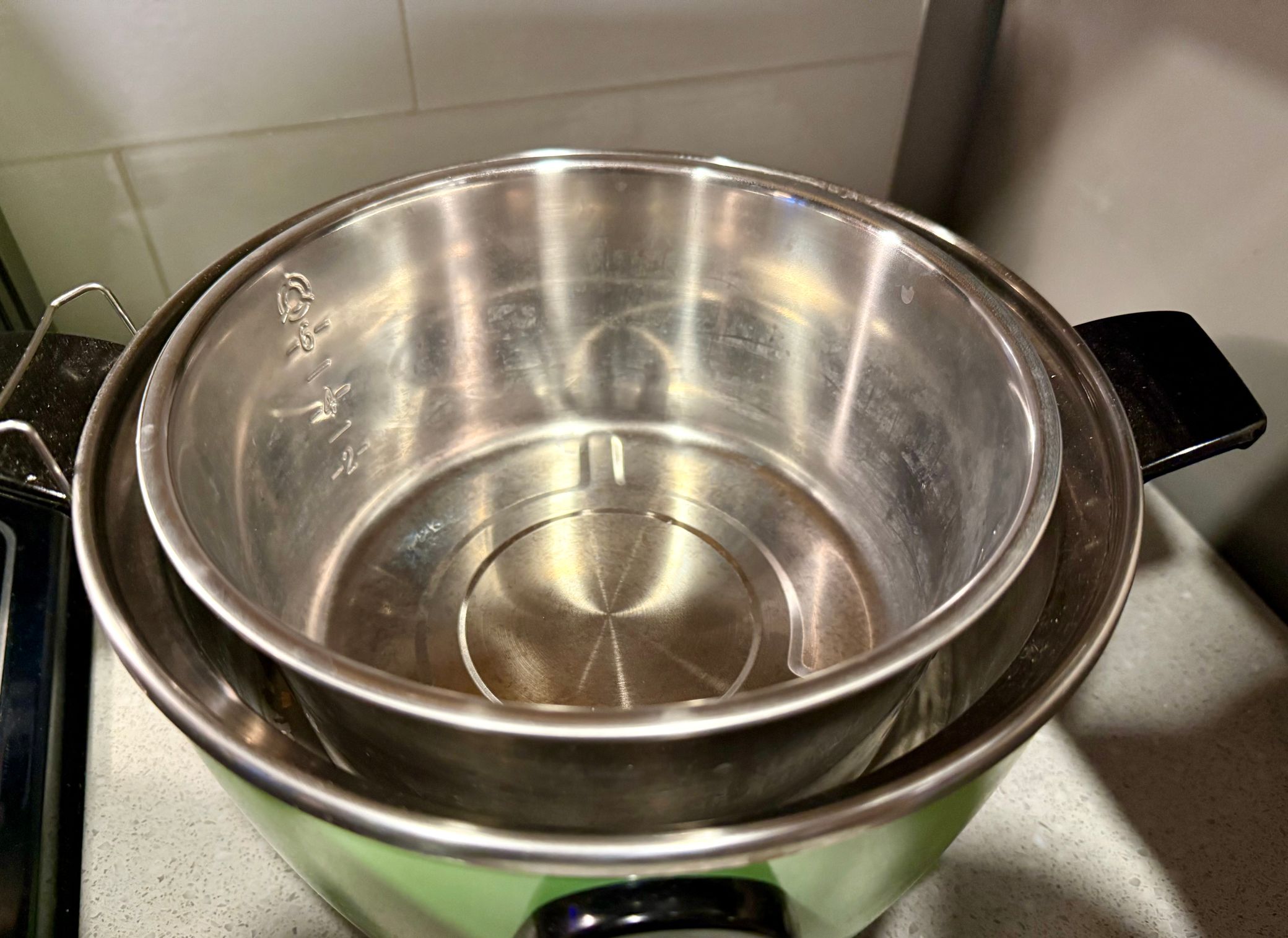
The other benefit is its reputation for durability (you'll find many people posting pictures of their grandparents' Tatung rice cooker that still works after decades). This and the simplicity of the controls turned out to be a big factor for me. Obviously, I can be pretty tech-savvy, but I like to pick and choose my battles. Making rice is not something I have a great desire to fiddle with; I just want good rice from a machine that won't break down.
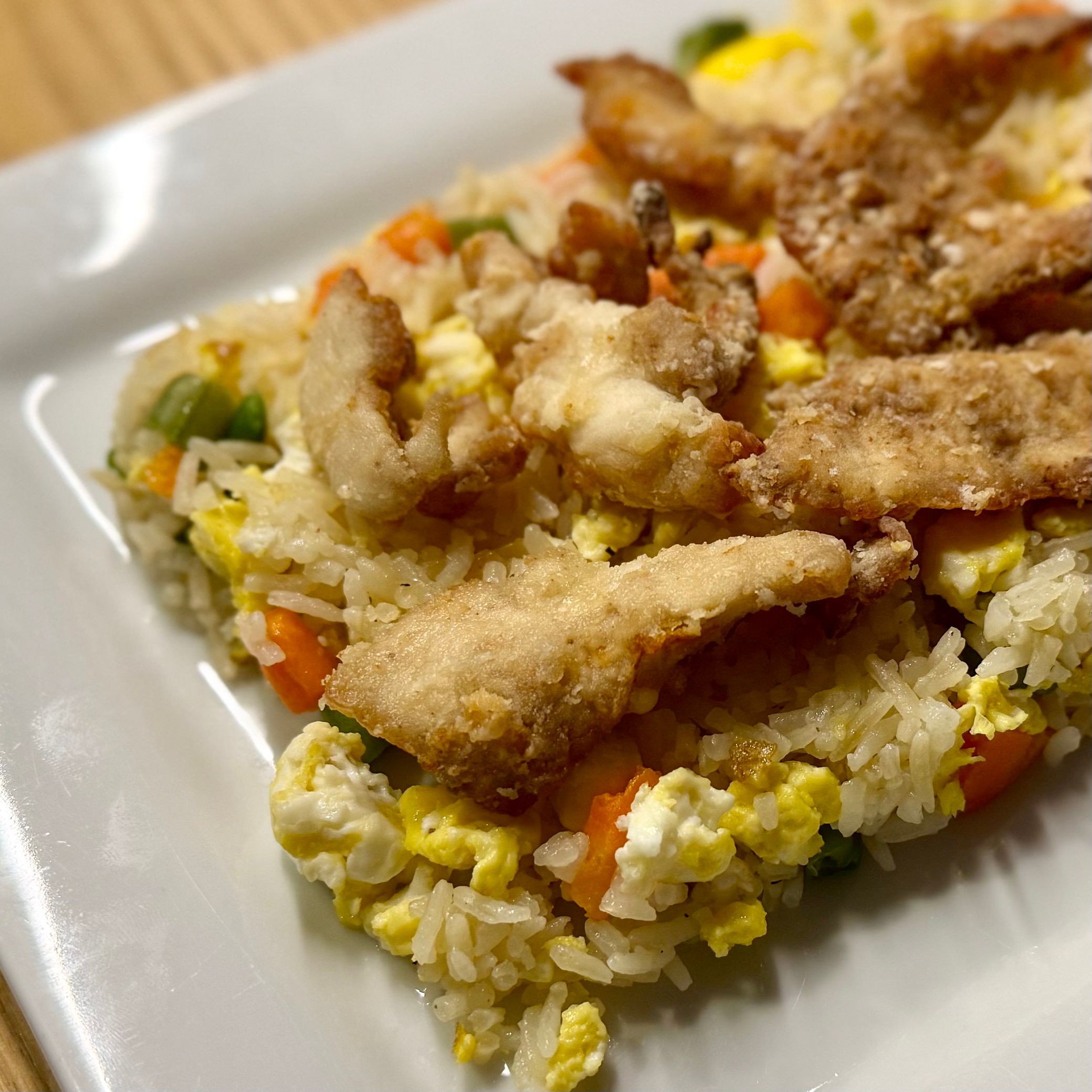
The surprise
For me, the surprise was why I ended up really liking the Tatung: the feeling it gives me. That may seem like a strange thing to say about a kitchen gadget, but something I could not shake while looking into rice cookers was this thing will probably sit on the counter most of the time. I have limited cabinet space and I make enough rice that it's just easier to always have it in view. There is something about the design of the Tatung that just speaks to me: the pea green, the curves, the overall shape — I just find it pleasing to look at.
I also value the connections it makes me think of. I studied Chinese language and history for many years, lived in China for a while, and have a great love for Taiwan in particular. ZSA's manufacturing partner, Tibbo, is also based out of Taiwan, so I have several personal connections there. There is something comforting about this physical object sitting on my counter that reminds me that the world is both big and small.
Here's me circa 2016 mid-negotiation for a pig-shaped teapot in Beijing:
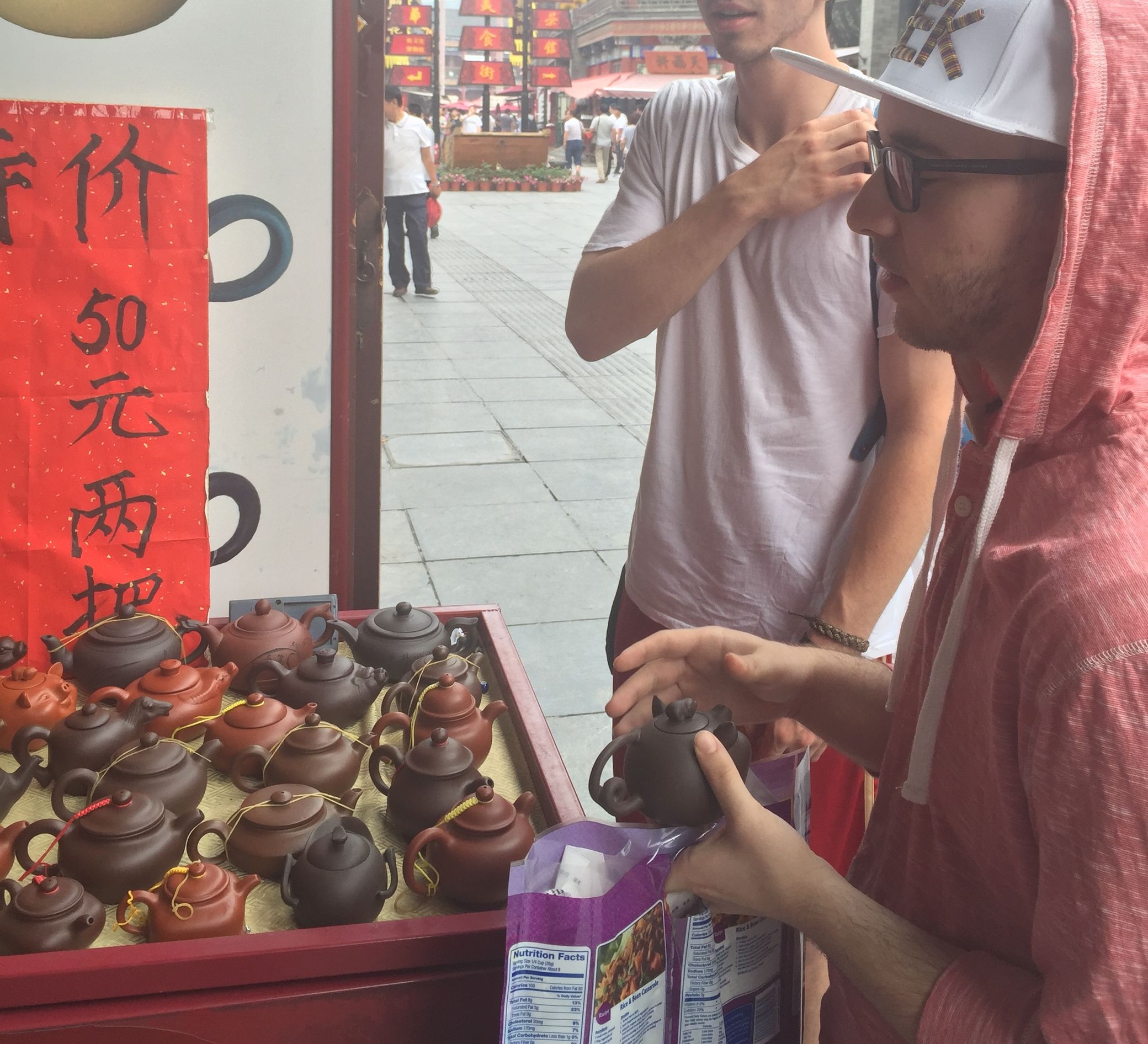
There are many ways to make rice, but there are not many objects I have that delight me in the way my Tatung has. I like looking at it, I like that it reminds me of my time in China, and I like that it makes me think of of my friends and colleagues. When I bite into a great bit of rice that I made with it, I end up getting so much more. Time will tell if its reputation of decades of durability holds up, but I hope it's a gadget that says with me for a long time.


